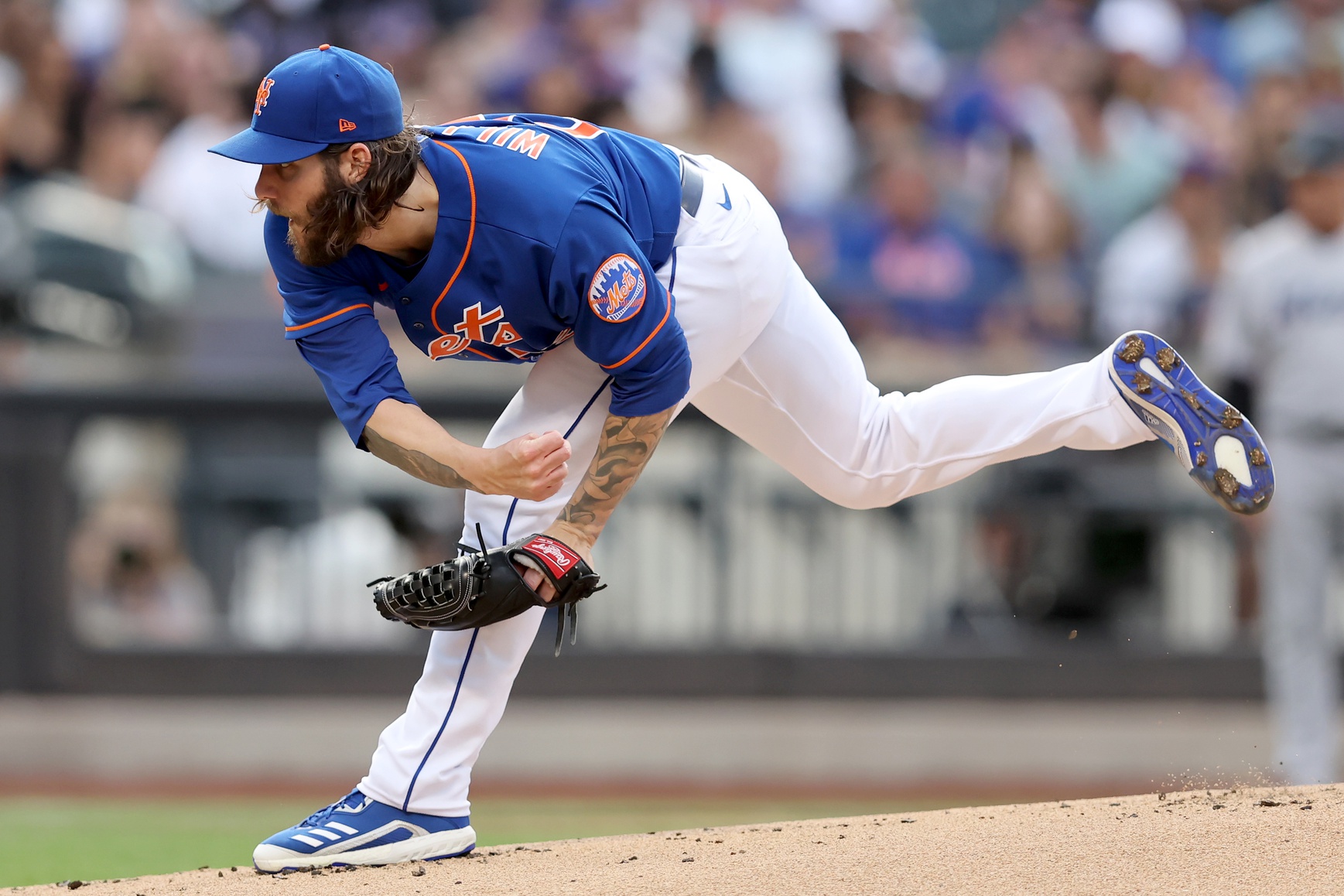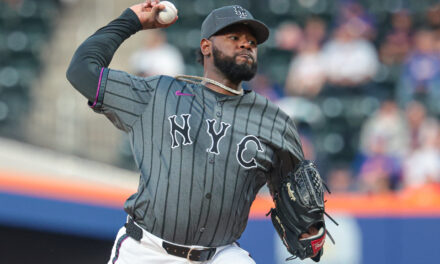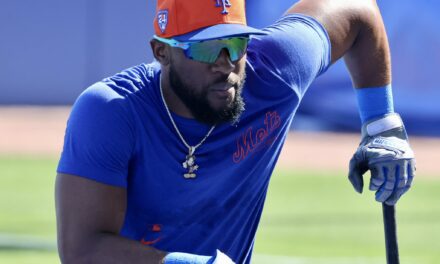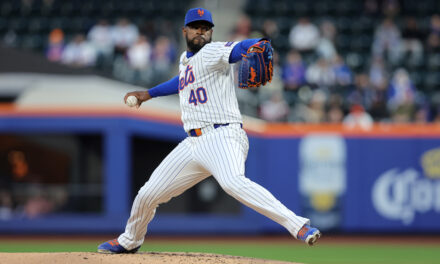
Brad Penner-USA TODAY Sports
Prior to being traded over to the New York Mets with Javier Báez from the Chicago Cubs at the 2021 trade deadline, right-hander Trevor Williams had almost entirely been a starter for his professional career.
Of the 119 games since his debut in 2016 through his last game with the Cubs in 2021, Williams had started 106 of them between the Pittsburgh Pirates and the aforementioned Cubs.
Williams, 30, made 10 appearances with the Mets down the stretch in 2021, three of which were starts. In 2022, the Mets continued to utilize the righty in a hybrid role, making nine starts and appearing in 21 games out of the pen.
In total, Williams made 30 appearances for a combined 89.2 innings pitched, posting a 3.21 ERA, 1.227 WHIP, and 0.6 fWAR. He was especially impressive out of the pen, where he recorded more than three outs in 14 of his 21 relief appearances and posted a 2.47 ERA.
Williams became the fourth Mets pitcher in club history to appear in 20+ games out of the pen, make 9+ starts, and post a sub-3.25 in a season, and first since Terry Leach in 1987.
One particular area of strength for Williams in 2022 was against right-handed hitters. Among 106 right-handed pitchers who faced a minimum 200 right-handed batters, Williams tied with Tony Gonsolin for the 13th-lowest ERA (2.72), tied with teammate Max Scherzer for the sixth-highest K% (31.7 percent), and the thirteenth-lowest opponent batting average (.209).
He services should be in high demand this offseason, where the San Diego-native will be hitting the free agent market for the second time in his career. With his ability to both start and relieve, Williams should be a suitor for plenty of teams who wish to add a veteran arm who can provide quality innings and has the ability to be a swingman.
While Williams and his camp wait to see who he’ll suit up for in 2023, Williams will be busy with his non-profit, Project 34.
While attending Arizona State University in 2011, Williams’ roommate and teammate on the baseball team, Cory Hahn (whose uniform number was 34), suffered a career-ending and life-changing spinal cord injury while sliding headfirst into second base. The non-profit’s mission is to assist individuals living with a spinal cord injury with the proper equipment and funding they need in order to live a more fulfilling life.
I had the privilege of speaking with Williams following the Mets’ exit in the Wild Card series where he discussed getting traded to the Mets, his transition to pitching out of the pen, and his non-profit.
MMO: Who were some of your favorite players growing up?
Williams: I grew up in San Diego and I went to a lot of Padres games growing up. I got to see a lot of Tony Gwynn and Ken Caminiti, and Trevor Hoffman was a big hero of mine.

MMO: At what point during your development did you start primarily focusing on pitching?
Williams: Pitching wasn’t until college. I hit high school pitching very well, but I knew at the next level I wasn’t going to be a good hitter. It was in college that I made the distinction of being a pitcher only.
MMO: What are your memories from the 2013 Draft? Did you have an idea that the Miami Marlins were an interested party?
Williams: We had a good feeling I was going to go the first day. I didn’t know exactly where and it wasn’t going to be the first half of the first round, but it was going to be anywhere between the second half of the first round to the end of the second round. We were waiting and seeing; we had a couple of hits from teams and they ended up drafting other players.
We were shocked and excited at the same time that the Marlins picked me (with the 44th overall pick) without a phone call or anything. I got to see my name go across the board in real-time.
MMO: I remember your major league debut on September 7, 2016, with the Pittsburgh Pirates, and how after the game your family was there to greet you. You and your dad had a wonderful moment where you hugged and gave him the game ball. What memories do you have from that day?
Williams: It was a special day for all of us. It was a very raw and emotional day because it was a culmination of all the hard work and dedication that my family has sacrificed and put into my baseball career. To share that moment with him (father) was very special.
MMO: In a podcast appearance you had in March 2021, you told the hosts that prior to signing with the Cubs as a free agent, you were close with another team before front office issues involving text messages occurred. Reading between the lines, is it safe to say you were close to signing with the Mets for 2021?
Williams: At that time, the only strong offer we had was from the Mets. It was at a point in the offseason where we didn’t know if we wanted to wait any longer, so they were definitely among the final few teams.
MMO: What was your initial reaction upon hearing the news that you and Javier Báez were traded to the Mets at the 2021 trade deadline?
Williams: It was exciting because at the time when we were traded over it was at that point in the year where teams start making playoff pushes, and unfortunately last year we weren’t able to do that.
It was fun to get traded to a first-place team at that point, and it was fun to go from a team that wasn’t going to make it to the playoffs to a team that was fighting for a spot.
MMO: I’ve interviewed several current pitchers on the club, and they all rave about the work Jeremy Hefner has done as pitching coach. What’s your impressions of Hefner?
Williams: It was great meeting him for the first time when I got traded over. It was a pretty seamless transition. He knew what made me good, meaning what he could do to help me and help utilize my repertoire a little more. It’s easy to communicate with him and he’s helped my career tremendously.
MMO: From 2019 through the 2021 season, you threw your slider at least 20 percent of the time each year. That changed in 2022, where your slider usage decreased to 11.7 percent. What was the reason for limiting your slider this season?
Williams: I think we recognized other pitches were better and recognized that what makes my slider good is when I throw it less as opposed to throwing it more often.
We relied on other pitches more to not be so heavily reliant upon a four-seam and a slider and be a two-pitch guy. I’m not a two-pitch guy and when I fall into that category it doesn’t really give me much success.
MMO: On the flip side, you threw your four-seam fastball more than any other season in your major league career (52.8 percent). When looking at Run Value, your four-seamer was one of the best in the league (-12). Can you talk about why you felt like your four-seam fastball was so effective this season?

Baseball Savant
Williams: When I was young, I was told you have to pitch with your fastball and have to be able to throw it to any spot in the zone. You can’t just fall in love with down-and-away or up-and-in or down-the-middle. It’s a pitch that I will always go to, and I will live-and-die with that pitch. Being able to throw it to all four quadrants and coupling that with my sinker, changeup, slider, and curveball really makes every pitch better.
Like I said, when I throw my slider less, it makes my fastball better. When I throw my sinker more, it makes my slider and my changeup better. When I throw my curveball more, it makes the effectiveness of my changeup better.
I think utilizing all those pitches and using them in different sequencing to get the best out of that pitch was effective this year. In certain games I came into, we had opportunities to throw the fastball more, and instances where I only had to go one time through the lineup. I knew that I could just throw fastballs that you really didn’t need to set-up hitters for the second or third time through.
MMO: Looking at your average horizontal release point for 2022, you appeared to move closer to the third base-side of the rubber with your arm slot (-2.34 feet) compared to 2020 (-1.55 feet). Was there a reason for that mechanical change and how did that aid in your pitching?
Williams: I think 2020 was just an outlier. I was throwing more over the top, and I went back to feeling more athletic and what gives me more deception is having a lower, not necessarily arm angle, but lower approach angle in how I pitch. The lower that it is, you set the eyes kind of lower and it makes my 91-mph fastball look a little harder than it is.
MMO: Are you the type of player that readily utilizes tech and data?
Williams: Yeah, I think it’s a useful tool.
MMO: Do you approach the analysts for information? Do they approach you? How does that process work?
Williams: It’s really how much you want to put into it. We have different guys for infield positioning and why they do that; we have different people for opponent hitters; we have different people for pitching game plans. It’s however much you want to put into it and ask questions.
The biggest thing with the Mets is the communication within. It’s been super helpful the last year and a half to go to them any time that I wanted.
MMO: You have primarily been a starting pitcher for your entire professional career. How difficult was the transition to go from starter to a spot starter/long-man/reliever hybrid this season?
Williams: I prepare to pitch, whether that’s every fifth day or every day. There was a little bit of an adjustment for me this year, but I was able to rely on our bullpen coach and rely on other players who have been in a similar role that I’ve been in to pick their brain on what works and what doesn’t. It was tough at first, but the guys made it an easier transition for me.
MMO: Looking at your 2022 splits, your numbers at home were phenomenal (2.65 ERA compared to 4.08 on the road; 25.1 K% at home compared to 19.0% on the road). Was there anything about pitching at Citi Field that you felt was a strength?
Williams: Nothing that I can think of off the top of my head. I think there’s always comfort knowing that you’re pitching at your home mound; the routine doesn’t get thrown off as much.
I think generally pitchers have a better time throwing at home than they do throwing on the road.
MMO: On an individual level, you had a terrific season in every role that Buck Showalter asked of you. Obviously, the season didn’t end the way the organization or fans wanted it. When you look back on the 2022 season what stands out for you the most?
Williams: Man, we played really well and I’m proud of the guys for the resilience that we had all year. Winning 101 games is tough! Unfortunately, at the end of the day we came up short, but that’s what makes baseball beautiful because at the end of the year there’s only one team remaining.
I think there’s a lot to be proud of and I’m looking forward to seeing what the Mets do moving forward.
MMO: Would you welcome a return back to the Mets?
Williams: Yeah, one-hundred percent. I think there’s a lot of good in New York, especially with the Mets, and there’s a lot of things to look forward to. If I’m given the opportunity to come back to New York I would welcome it and hopefully help the team out as much as I can.
MMO: In your final appearance of the season, you had Francisco Álvarez as your catcher. We know about his offensive profile but what did you think about his receiving skills?

Photo: Corey Sipkin, NY Post
Williams: It was really good! It was a good first date that we had together, and I think we were pretty much on the same page. We had a good meeting before the game on what I like to do and how I like to pitch.
He did his due diligence; he talked with [Tomás] Nido and [James] McCann to get a feel for the type of pitcher I am, and I thought it went really well.
MMO: You have a non-profit called Project 34. Can you talk about why and when you started it, and the foundation’s mission?
Williams: Our mission is to help individuals and families who are living with a spinal cord injury.
My roommate in college, his name is Cory Hahn, he broke his neck in 2011 in our freshman year at Arizona State. He is living with a spinal cord injury and we both saw that there was a great need for that community, whether that’s financial aid for a new wheelchair, financial aid for proper physical therapy, truly anything that makes those living with an individual or an individual living with a spinal cord injury a more independent and fulfilling life.
We’ve been around for five years now and it’s been great getting to know people all around the country that have been impacted by Cory’s story. It’s an honor and privilege to be able to share Cory’s story and help people even if it’s just in a small way.
MMO: Are there any upcoming events you’d like to promote? And how can people get involved?
Williams: Every year we do a golf event and an announcement will be made shortly on our social medias on when the date will be. That’s something to look out for and if you follow us on social media, it’s ProjThirtyFour, all spelled out.
MMO: Thanks so much for some time today, Trevor. Have a great offseason.
Williams: Thank you.
Follow Trevor Williams on Twitter, @MeLlamoTrevor
Follow Project 34 on Twitter, @ProjThirtyFour
Check out Trevor’s foundation, Project 34, here.
















